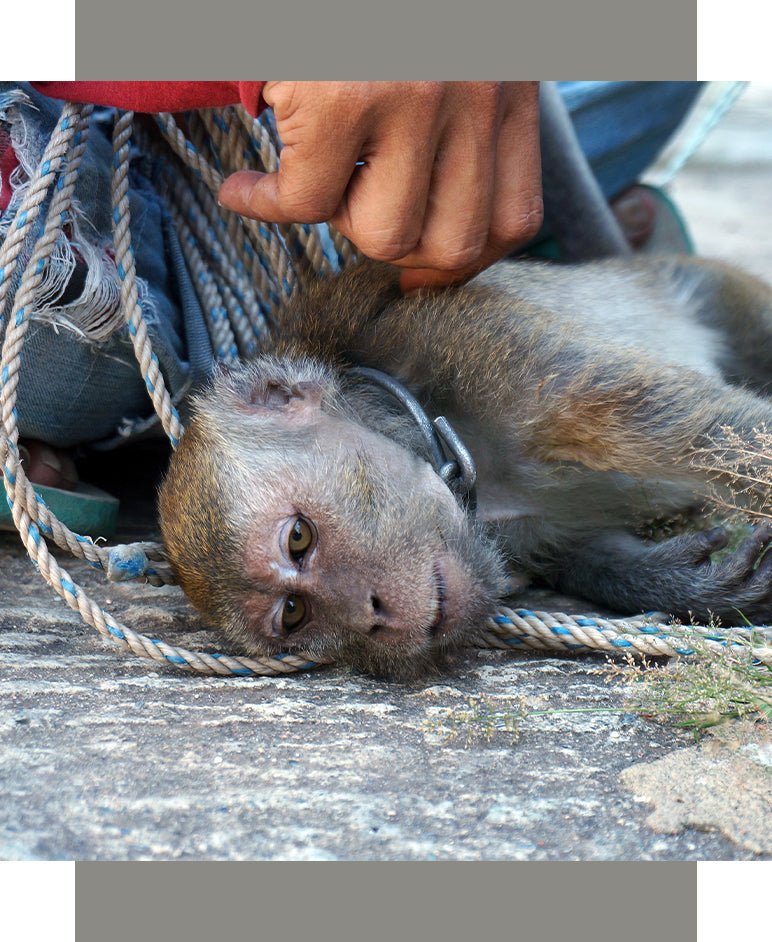Asian animals - we all love them. My post is inspired by photos on Facebook. I have to speak up. When visiting the colorful and natural rich Asia, we often have the opportunity to "be close to nature" in a way that harms it. In most cases, we are not aware of this, which I know from conversations with friends. Your intentions are pure, but you do not know that getting close to an Asian animal harms it.
If you take a selfie with an animal, pet it or ride it – be careful, because the life of this animal is not at all pleasant, and is often cruel. We often deal with the so-called "animal exploitation", i.e. the use of animals by humans mainly for the purpose of profit. Often "animal sanctuary" – sounds nice, but is not true.
According to the data I had access to, around 550,000 wild animals worldwide suffer from exploitation in the tourism industry. This number terrifies me. Education is needed – I hope you will help me and share this post widely.
BELOW ARE SOME EXAMPLES
RIDING AN ELEPHANT
A very popular attraction in Thailand and I see from Facebook posts that tourists brag about it. Don't believe that the elephants you meet in seemingly open spaces in so-called refuges or parks have been saved or that people are helping them in some way. Usually these are elephants kidnapped into captivity, beaten to the point of bleeding with sharp-tipped stakes, trained until they become obedient. After an elephant carrying visitors around Angkor Wat died of a heart attack and the case was publicized in the media - elephant rides were stopped there, but you can ride them elsewhere. Let's not do this. Would you also like to live in captivity and carry burdens on your back?
STARFISH AND OTHER SEA ANIMALS
Never take them out of the water for photos. Starfish die when they are out of the water even for a few seconds. The skin of a starfish is thick, but it has a stomach on top. When taken out of the water, the water from the stomach will flow out and only if you skillfully put it back the other way will the air escape from the stomach. Otherwise, the air will remain inside causing severe pain. In Asia, we have the opportunity to dive and watch beautiful water landscapes. We can see colorful, wonderful creatures up close. What we admire was often created by nature for a very long time, and it is so easy to destroy it. A colorful reef is created for decades and is a shelter for thousands of creatures. And it can be destroyed in a second. Let's not touch and take nothing with us except the water.
SELFIE WITH A TIGER
It's wonderful to see tigers in the wild, but it's difficult and complicated. That's why attractions like tiger "shelters" have been created, which pretend to help animals, but in reality it's a typical tourist business. They are popular in Thailand, where even franchises of such centers have been created. Their goal is to make a profit, not to benefit the tigers. The fee of a dozen or so dollars to get close to a tiger is not high, and you can also choose a tiger - from a young one to an adult. Has anyone ever wondered how it is that tigers are so gentle and willing to sit quietly, and people are taking pictures with them? Firstly, the young ones are taken from their mothers, often very early, and raised by people. This means that they are doomed to complete dependence on humans for food and will not be independent in the wild. Tigers are kept in cages all day long, except when they are taken for photos. In most cases, they are also stuffed with medicines and drugs that make them calm and as if asleep. Is a selfie with a tiger worth its captivity?
SWIMMING WITH DOLPHINS
I don't mean something as obvious as dolphinariums or water amusement parks where animals are trained, but swimming in a seemingly open space, which may seem harmless. Dolphins are freedom-loving animals that are constantly moving in water. Wild ones will not swim to shore. In facilities offering dolphin swimming, very often dolphins are kept in small pools, surrounded by ragged, rusty fences or near sewage canals or in a shallow lagoon so that they cannot swim away. They may be fed with rotten fish and suffer from disease and starvation. Most foreign facilities capture their dolphins directly from open water. Capture is very traumatic for wild dolphins and can cause an often fatal disease called stress capture.
COFFEE PLANTATIONS - LUWAK COFFEE
This is the most expensive coffee in the world, and a lot of it comes from Bali. It is literally coffee made from the poop of an animal called luwak. Coffee used to be made from the poop that occurs in nature, but due to the increase in demand, the "production" has been industrialized. The animals are kept in small cages like caged chickens, they are sad and unhappy. They never go outside to the grass and are forced to eat an unnatural amount of food so that they produce a lot of poop. All so that people can drink this expensive coffee!
I hope that this post has opened your eyes a little. When I created the Orientana brand, I assumed from the very beginning that I would produce cosmetics that were not tested on animals (even before the European Union ordered it) and that were created without any harm to animals. Keep in mind that similar "attractions" with animals appear on every continent. So share this post because I would like this information to reach as wide an audience as possible.






